Meteor Shower Tonight
January 3, 2012 by staff · Comments Off on Meteor Shower Tonight
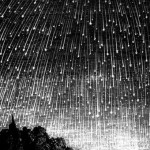 Meteor Shower Tonight, Warm air aloft will begin to move into our area today, heralding the beginning of a warm-up that should become very noticeable on Thursday and Friday of this week, when we could see highs in the 40’s once again. However, for today we’ll have to be content with a high in the upper 20’s…still cool, but at least we will be back above average. With partly cloudy skies expected overnight tonight, we will have the chance to see a nice show in the sky tomorrow morning. Astronomers are predicting a brief two hour meteor shower Wednesday morning, between 3:00 and 5:00 a.m. Central Time. The Quandrantids, or “Quads” as most people call them, are named for an old constellation called Quadrans Muralis. This particular meteor shower will come from the remnants of a comet named 2003EH1, which is thought to have broken up sometime during the past 500 years. The tiny particles of rock that remain will enter the earth’s atmosphere at 90,000 mph, burning up 50 miles above the surface and creating “falling stars” for us to see. Scientists expect over 100 “shooting stars” per hour, meaning at least 1-2 per minute during that 2-hour window tomorrow morning…so consider waking up early tomorrow, and enjoying that morning cup of coffee out on your deck as you watch the show overhead!
Meteor Shower Tonight, Warm air aloft will begin to move into our area today, heralding the beginning of a warm-up that should become very noticeable on Thursday and Friday of this week, when we could see highs in the 40’s once again. However, for today we’ll have to be content with a high in the upper 20’s…still cool, but at least we will be back above average. With partly cloudy skies expected overnight tonight, we will have the chance to see a nice show in the sky tomorrow morning. Astronomers are predicting a brief two hour meteor shower Wednesday morning, between 3:00 and 5:00 a.m. Central Time. The Quandrantids, or “Quads” as most people call them, are named for an old constellation called Quadrans Muralis. This particular meteor shower will come from the remnants of a comet named 2003EH1, which is thought to have broken up sometime during the past 500 years. The tiny particles of rock that remain will enter the earth’s atmosphere at 90,000 mph, burning up 50 miles above the surface and creating “falling stars” for us to see. Scientists expect over 100 “shooting stars” per hour, meaning at least 1-2 per minute during that 2-hour window tomorrow morning…so consider waking up early tomorrow, and enjoying that morning cup of coffee out on your deck as you watch the show overhead!
Our numbers from Monday included a high temperature of 18 degrees, while our low dipped to 6 degrees (the average temperatures for January 2 are 24 and 4 degrees). No precipitation was observed. Our peak wind gust was 17 mph from the north, just before 12 noon. Current conditions this morning include a temperature of 8 degrees, winds from the SE at 2 mph, and a falling barometer with 30.28 inches of pressure. The river is 5.00 feet deep.
Weather records on the books for today include a high temperature of 45 degrees (set in 1984), a low of -25 degrees (from 2010), and two precipitation records from back in 1906 (9.0″ of snow, and 0.76″ of moisture).
According to the National Weather Service, on this date back in 1977, heavy snow fell in southern Minnesota, with 14.2 inches reported in Mankato. Then in 1981 arctic air caused the temperatures to plunge across northern Minnesota. Embarass, Wannaska, and Tower all reported -38 degrees for an overnight low.
In Chaska on this date last year, we saw a high temperature of 19 degrees and a low of -9 degrees. We received 0.6″ of snow, which contained 0.02″ of moisture. Our snow cover was 9 inches. The river was 15.13 feet deep.
Geminid Meteor Shower 2010
December 13, 2010 by USA Post · Comments Off on Geminid Meteor Shower 2010
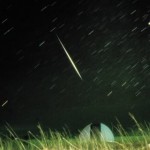 Geminid Meteor Shower 2010, The constellation of Gemini the Twins is becoming a hot spot of activity for the next two weeks. SkyWatchers see a lot of fire streaks of light from Gemini following Geminids meteor shower annually.
Geminid Meteor Shower 2010, The constellation of Gemini the Twins is becoming a hot spot of activity for the next two weeks. SkyWatchers see a lot of fire streaks of light from Gemini following Geminids meteor shower annually.
Contrary to the shower in August Perseid meteor shower which was held annually for centuries, the Geminid meteor shower is a newcomer.
No one has reported seeing Geminid meteors before 1862, but every December starting this year, the Geminid shower has appeared on the schedule and seems to become stronger and better every year. Astronomers predict that this year’s Geminid meteor shower could be the best, up to 120 meteors per hour at its peak.
The Geminid meteors are unique because the parent body appears to be a rocky asteroid rather than a comet ice. In 1984, astronomers have discovered a small object, about 3 miles in diameter, orbiting in the same way as the swarm of dust that generates our Geminids meteor shower. Now, named Phaeton, this asteroid might be a comet burning in disguise – that is, a comet that has lost all its ice after the passage of many around the sun and is now only the skeleton of a rocky time active comet. The trail of dust that follows Phaethon around the sun could be left over from his day’s comet.
You can start to see some Geminid meteors about a week before the shower peaks on Monday night. A single observer can see dozens of “shooting stars” or meteors per hour near the tip. Meteors fan from a point near the twin stars of Castor and Pollux in the constellation Gemini, but they will be visible in the sky.
Gemini rises above our eastern mountains long before midnight; the action could start earlier than in most meteor showers. And Geminid meteors tend to be slower than the Perseids in August or November Leonids, producing long ridges graceful in the sky. The gibbous moon will be at 1:45 Tuesday morning the peak of the meteor shower, leaving the sky dark and perfect for viewing meteors.
If the sky is clear on Monday night, dress against the cold, relax with a sleeping bag on the floor or in a recliner, and enjoy the fireworks. Remember, the closer on Tuesday at dawn watching the meteors, the more you’re likely to see until the day begins to illuminate the sky. Shower next year’s Geminid meteor shower will be spoiled by a nearly full moon, so you do not want to miss what could be the best meteor shower of 2010.
Metor Shower Tonight
August 13, 2010 by staff · Comments Off on Metor Shower Tonight
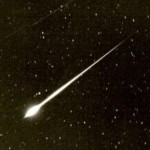 Metor Shower Tonight, Metor shower tonight will be at best according to NASA officials. However cloudy atmosphere in parts of the United States is an obstacle to the spectacular view. NASA has predicted that there will be about 80 meteors per hour and the best time to see the light show is from 11:00 pm to 5:00 am for the sky would be dark during those hours. Those in the mountainous region may have more than 100 meteors per hour. People in the northern hemisphere will have a better view of the shooting star. Last year the meteor show was even better with about 200 meteors per hour.
Metor Shower Tonight, Metor shower tonight will be at best according to NASA officials. However cloudy atmosphere in parts of the United States is an obstacle to the spectacular view. NASA has predicted that there will be about 80 meteors per hour and the best time to see the light show is from 11:00 pm to 5:00 am for the sky would be dark during those hours. Those in the mountainous region may have more than 100 meteors per hour. People in the northern hemisphere will have a better view of the shooting star. Last year the meteor show was even better with about 200 meteors per hour.
A viewing guide is available on the NASA Web site to help viewers at home. Metor shower tonight called Perseids because the stars will point back to the constellation Perseus. Scientists have warned people to look up in the sky and the constellation to avoid any radiation affects.
Metor shower tonight is attributed to the comet named Swift-Tuttle. It takes 133 years for the comet to orbit the sun. concert tonight will be better visibility, as it is happening at a time when the moon is not so bright. The lights dim meteors will also be visible in the absence of moonlight. No special equipment is needed to see the light show. dark and less polluted sites offer a better view.
Those who do not leave free time in the morning of Friday, still have the chance to see the show on Saturday morning.
Meteor Shower August 2010
August 12, 2010 by staff · Comments Off on Meteor Shower August 2010
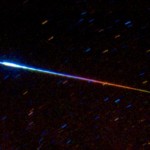 Meteor Shower August 2010, The August 2010 meteor shower is expected to happen later tonight August 12, 2010. The meteors or shooting stars have already happening across the sky this week, but the peak is for the final hours Thursday night and early Friday, according to reports.
Meteor Shower August 2010, The August 2010 meteor shower is expected to happen later tonight August 12, 2010. The meteors or shooting stars have already happening across the sky this week, but the peak is for the final hours Thursday night and early Friday, according to reports.
The Perseids are so called as they arise come from the constellation Perseus. And humans have been able to see the Perseid meteor shower August each year about 2000 years, when Earth passes over the dust of the comet.
Notts Astronomer Phil Randall said “You can get 50 to 80 meteors an hour, so there is a fair chance you will see something.”
A small 1 inch (2.5 cm) thick meteor fireball caused when he met a burning August 3 disappearance while rays in Earth’s atmosphere, according to NASA’s Marshall Space Flight Center in Huntsville, Ala. The was pragmatic fireball in the sky to watch the cameras operated by the space center.
The fireball occurred at around 21:56 local time and was low in the sky when it entered Earth’s atmosphere about 70 miles (112.6 km) above the town of Paint Rock. Apparently, about 9.5 degrees above horizon. By contrast, the fist at arm’s length is equal to about 10 degrees in the night sky.
NASA spokeswoman Janet Anderson said: “It is a very good start this year’s Perseids meteor shower which will peak on the night of August 12-13 between midnight and dawn.” And NASA observations found the meteorite that travels through the atmosphere at a phenomenal 134.000 mph (215.652 kph).
Meteor Shower August 2010
August 12, 2010 by staff · Comments Off on Meteor Shower August 2010
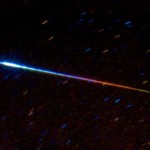 Meteor Shower August 2010, The August 2010 meteor shower is in the news today and people are very excited about the meteor shower will be this month. The meteor shower in August 2010 is under the observation of people and they are waiting to see it. Meteor activity will peak during this month and people are looking for their latest updates on the Internet. If you want to see the meteor shower of what to spend the night woke up and keep an eye on the sky. You should go as far as possible from any city or cities so that the sky is not polluted and you can also watch the sky. The skies of cities are polluted and the smoke and other pollution & contamination do not allow these people to see the stars clearly.
Meteor Shower August 2010, The August 2010 meteor shower is in the news today and people are very excited about the meteor shower will be this month. The meteor shower in August 2010 is under the observation of people and they are waiting to see it. Meteor activity will peak during this month and people are looking for their latest updates on the Internet. If you want to see the meteor shower of what to spend the night woke up and keep an eye on the sky. You should go as far as possible from any city or cities so that the sky is not polluted and you can also watch the sky. The skies of cities are polluted and the smoke and other pollution & contamination do not allow these people to see the stars clearly.
You must keep an eye on the sky for at least half an hour and watch the meteor shower August 2010. If you relax and sit in a chair and keep looking in the sky for meteors these activities then you can enjoy them. The activities of the meteors will be at its peak in the twelfth and thirteenth of August. If you go to see the meteor shower then the best time to do this is the beginning of the afternoon, this time is just before dawn. When the sky is darker it becomes easier to see the meteors. Scientists also observe the meteor shower with their telescopes.



